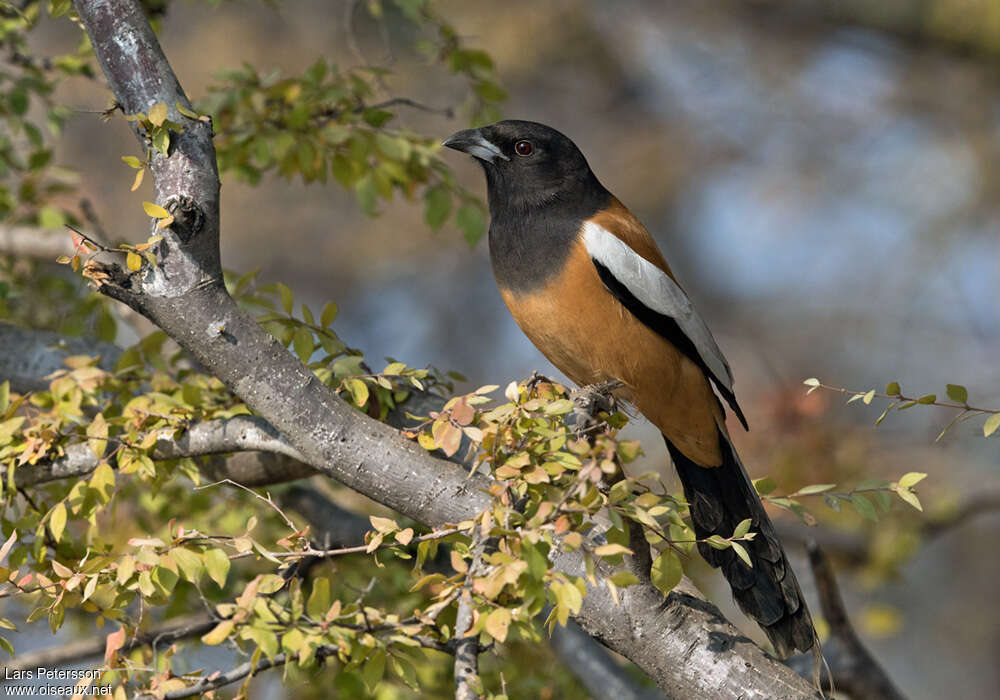The widespread populations show variations and several subspecies are recognized. The nominate subspecies is found in the northeastern part of peninsular India south to Hyderabad. The desert form is paler and called pallida, vernayi of the Eastern Ghats is brighter while parvula of the Western Ghats is smaller in size.[2] The form in Afghanistan and Pakistan is bristoli while the form in southern Thailand is saturatior. E C Stuart Baker describes sclateri from the upper Chindwin to the Chin Hills and kinneari from southern Myanmar and northwest Thailand.[3] The population in eastern Thailand an Indochina is sakeratensis.[4]
Distribution

The range of this species is quite large, covering all of mainland India up to the Himalayas, Pakistan and southeasterly in a broad band into Bangladesh, Burma (Myanmar), Laos, and Thailand in open forest consisting of scrub, plantations and gardens. In the Himalayas, they make seasonal altitudinal movements.[5]
Behaviour and ecology
The rufous treepie is primarily an arboreal omnivore feeding on fruits, nectar (of Bombax ceiba[6]) seeds,[7] invertebrates, small reptiles and the eggs and young of birds;[8] it has also been known to take flesh from recently killed carcasses. It is an agile forager, clinging and clambering through the branches and sometimes joining mixed hunting parties along with species such as drongos and babblers. They are known to be a cleaning symbiont of deer, feeding on ectoparasites of sambar which permit them to perch and position themselves to invite the birds to examine specific parts.[9][10] Like many other corvids they are known to cache food.[11] They have been considered to be beneficial to palm cultivation in southern India due to their foraging on the grubs of the destructive weevil Rhynchophorus ferrugineus.[12] They are known to feed on the fruits of Trichosanthes tricuspidata which are toxic to mammals.[13]
This species has a wide repertoire of calls, but a bob-o-link or ko-tree call is most common.[2] A local name for this bird kotri is derived from the typical call while other names include Handi Chancha and taka chor (="coin thief").[13][17]
A blood parasitic protozoan Trypanosoma corvi[18] and Babesia has been reported from this species.[19] Trematode parasites, Haplorchis vagabundi, have been found in their intestines.[20] An acanthocephalan parasite Centrorhynchus lancea is also known.[21] A species of quill mite Syringophiloidus dendrocittae is known to live in the feathers of rufous treepies.[22]





No comments:
Post a Comment
Note: Only a member of this blog may post a comment.